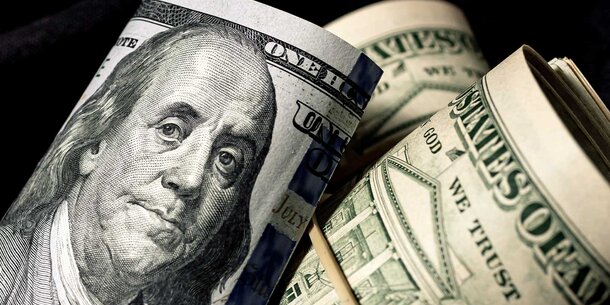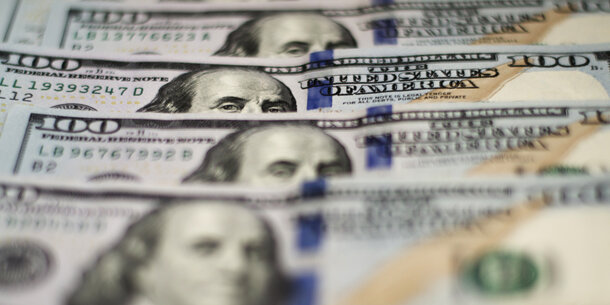In what is projected to be the most expensive midterm election cycle ever, massive spending by a small number of megadonors illustrated how much our political process has become a rich person’s game. More than a decade after the Supreme Court’s decision in Citizens United significantly deregulated political spending, its antidemocratic effects have become painfully clear.
A look back at campaign finance in 2022 highlights four points. First, even massive participation by everyday Americans giving small donations is dwarfed by megadonors’ control of the process. Second, election deniers were boosted by big money from national donors, even in traditionally sleepy state races. Third, megadonors take advantage of “dark money” loopholes, which should be closed. Finally, popular reforms are advancing, like New York State’s groundbreaking small donor public financing program.
A healthy democracy requires everyone to have a voice. Increasingly, our system allows a few to use their extreme private wealth to mold our politics — but that’s not inevitable. We must continue to demand reforms.
Small donors may have surged, but big donors still dominated.
This year’s elections energized Americans, leading to high turnout and widespread giving by small donors. According to data from OpenSecrets, small donors — defined as people giving $200 or less — gave over $747 million to House and Senate candidates. This is a record high for the midterms, and it’s $138 million more than what small donors gave in 2018 and a staggering four times higher than in 2014.
But just 21 of the biggest donor families, who come from both sides of the political divide, each shelled out at least $15 million for a total of $783 million. That’s more than the contributions by at least 3.7 million small donors. And billionaires provided 15 percent of all federal election financing. Most of this money has gone to super PACs, which can take unlimited contribution amounts.
Political sponsorship by the biggest donors has grown at an explosive rate, far faster than small money. The 100 biggest donors and their spouses were overwhelmingly outspent by small donors in 2010, the year Citizens United was decided. But in 2022, the 100 biggest donors gave 60 percent more than all small donors.
The outsized influence of the ultrawealthy has many antidemocratic effects. Megadonors know the politicians they boost, if elected, will listen to their ideas about policy — something everyday voters cannot count on in such a skewed system. Even before the election, megadonors can act as gatekeepers because their huge spending effectively raises the price of admission so high as to bar candidates who don’t attract megadonor support but may be more representative of voters. And in this election, we saw megadonors making it possible for extremist candidates to rise to prominence by attacking the fundamentals of democracy itself.
Big donors and election denial turned state elections into national contests.
Amid a massive disinformation campaign claiming the 2020 election was “stolen” from Donald Trump, many campaigns focused on the Big Lie, including in races for election administration positions. A flood of donations from across the country helped to stoke election denialism and draw national attention to once sleepy, bureaucratic contests for secretary of state — in most states, the chief election officer. Across six battleground states, fundraising by secretary of state candidates totaled $26.4 million through September, more than double the amount in 2018. Some candidates took in 40 percent or more of their money from outside the state or attracted millions in spending from national groups.
Some of the biggest donors in the country sponsored election deniers’ campaigns for governor and secretary of state and made them national names. Election deniers J.D. Vance and Blake Masters were political novices but also former business associates of venture capitalist Peter Thiel. He spent tens of millions boosting their campaigns. Former Overstock CEO Patrick Byrne and his group the America Project made large, early contributions to the Nevada secretary of state campaign of Jim Marchant and his America First coalition of election deniers.
Most election denier candidates in contests for posts related to election administration like secretary of state and governor lost, and they often underperformed compared to more mainstream candidates of the same party on the same ticket.
Dark money is getting darker, but transparency matters.
The total cost of federal and state elections this year will be $16.7 billion, according to OpenSecrets. But that’s only how much has been reported as required by law. The true extent of megadonor giving is unknown but certainly higher as gaping loopholes in federal law, and in many states’ laws, make unlimited, anonymous spending in politics — or “dark money” — easy.
Although dark money groups have reported less and less spending to the Federal Election Commission in recent years, that appears to be because they have shifted spending to forms that aren’t required to be reported. Analysis by OpenSecrets shows that four party-aligned dark money groups pumped almost $300 million into this election cycle by giving to sister super PACs or buying cleverly worded ads — without reporting their spending or their donors. There are hundreds more politically active groups pouring secret money into our elections.
The disclosure rules that are in place show how bad the problem of megadonor dominance has gotten — and which special interests politicians are beholden to. Throughout the cycle, media outlets and organizations like OpenSecrets provided essential research and analysis quantifying and naming big money in politics by using mandatory campaign finance disclosures.
Transparency helps voters make informed decisions at the ballot box and hold political leaders accountable, essential aspects of a healthy democracy. It’s crucial to increase the transparency of election money by closing loopholes in the law that allow dark money to hide.
Voters want the campaign finance side of democracy to be more democratic.
In 2020, state lawmakers answered New Yorkers’ demand for a more democratic option for financing elections by enacting a groundbreaking small donor public financing program, which launched last week. Public financing is the most powerful available response to Citizens United, which opened the floodgates to big money and foreclosed many other reform paths. New York’s program, which is voluntary, will enable serious candidates to raise competitive sums relying on small-donor constituents, as long as they abide by strict contribution and transparency rules.
As the record-breaking outside spending by megadonors in this year’s gubernatorial race showed, New York urgently needs this reform. The new program will help counter the dominance of wealthy donors and special interests and empower more New Yorkers to be heard in the political process.
Gov. Kathy Hochul has been a strong supporter of the program, and her reelection will help ensure that it is adequately funded and ready to serve voters and the candidates they support for the 2024 legislative election.
Last week, voters gave public financing and other pro-democracy campaign finance reforms clear victories from coast to coast. In Portland, Maine, voters overwhelmingly approved a ballot measure creating a public funding program, barring corporate contributions to candidates for local office and requiring greater transparency of campaign contributions. Voters in Oakland, California, approved a ballot measure establishing a “Democracy Dollars” program, which will provide eligible city residents with $100 in vouchers to fund local candidates of their choice. Arizona voters approved a measure shedding light on dark money by requiring the disclosure of big donors to political committees. All three ballot initiatives won with at least 65 percent of voters’ approval, demonstrating how popular these reforms are among everyday Americans.




